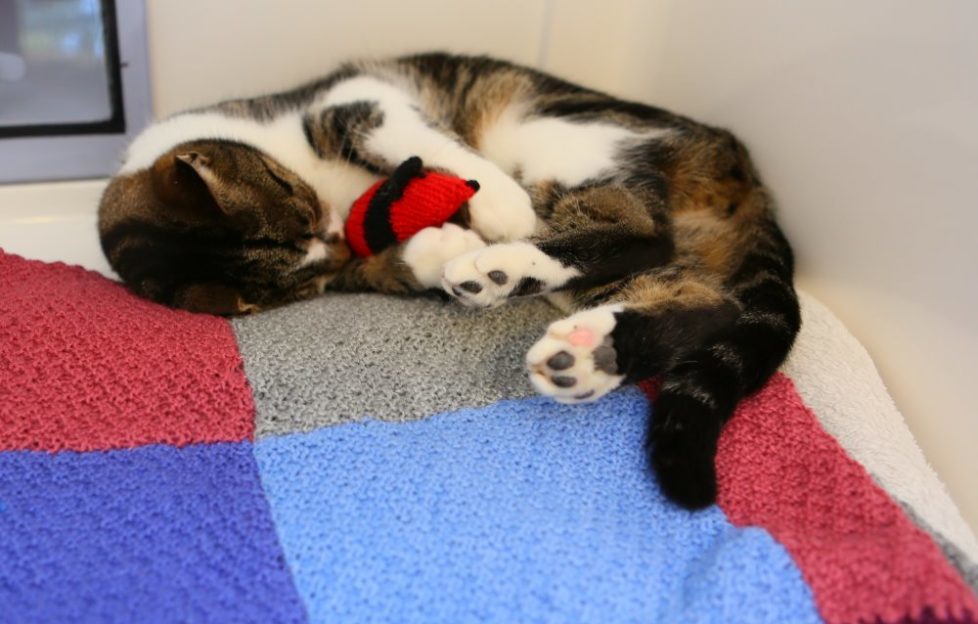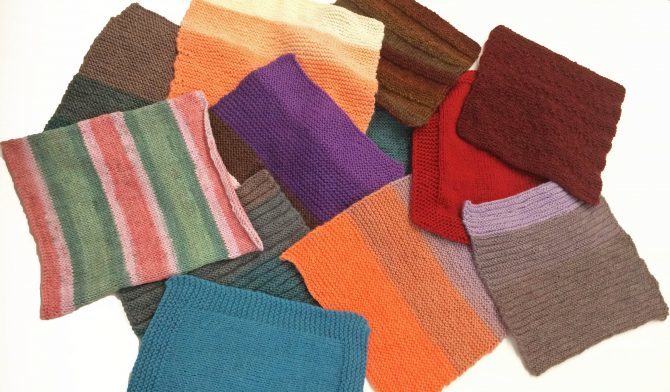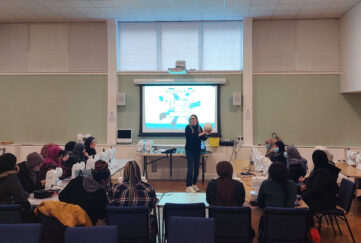Cat comforter pattern

Make your squares around 25 cm x 25 cm. You can knit or crochet these. Work your squares in any combination of stitches you want, but check out the guidelines first to make sure you are using a suitable yarn and avoid loose stitches worked on large needles.
If you are working in a double knitting yarn, check the tension guide on the ball-band. A double knitting square will take about 55/56 stitches and around 70 rows using 3.75 mm (No. 9) or 4 mm (No. 8) needles.
If you would like to work in a chunky yarn, cast on around 34/35 stitches and work about 32 rows using 6 mm (No. 4) or 6.5 mm (No. 3) needles.
Again be guided by the tension information on the ball-band. Squares can be worked in garter stitch (every stitch knitted), stocking-stitch (knit one row, purl one row), in rib (you may need to work with more stitches to do this), in basketweave, with cables or in a mix of textured patterns.

You can mix colours as long as you make sure all ends are stitched in very securely and the yarns used are all of the same weight.
Any colour can be used for your comforters, but as these are practical items and likely to get dirty, we would suggest you avoid very pale shades. As well as solid shades, you can use tweedy yarns and self-patterning yarns to create interesting effects.
Remember, too, that these squares are likely to be washed often, so make sure your yarn is machine washable. If you prefer to crochet a square we would recommend working in double crochet which will create a firm, solid fabric.
You can work in squares or rows, whichever you find simpler. As with the knitted squares, avoid loose stitches and make sure all ends are very securely stitched in.





